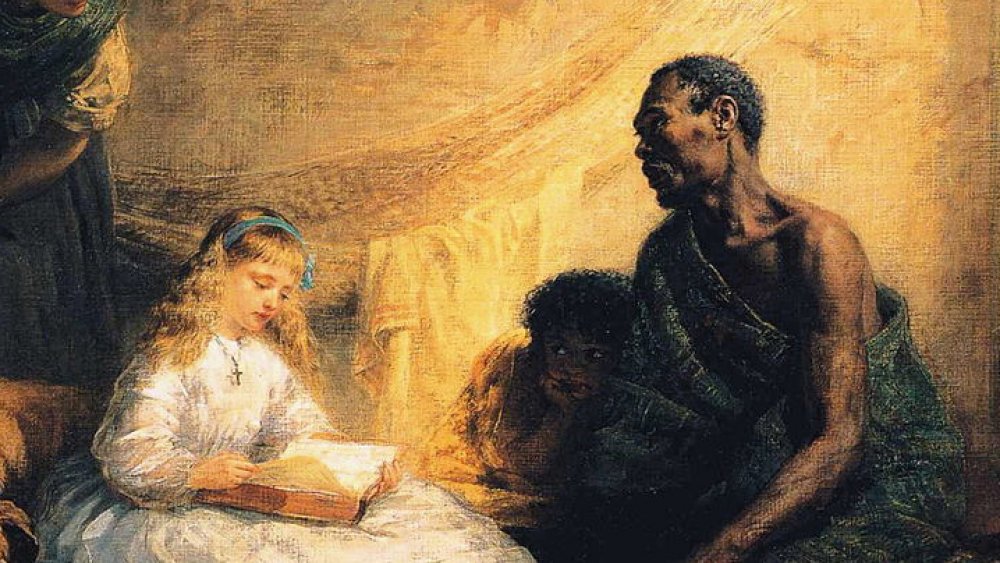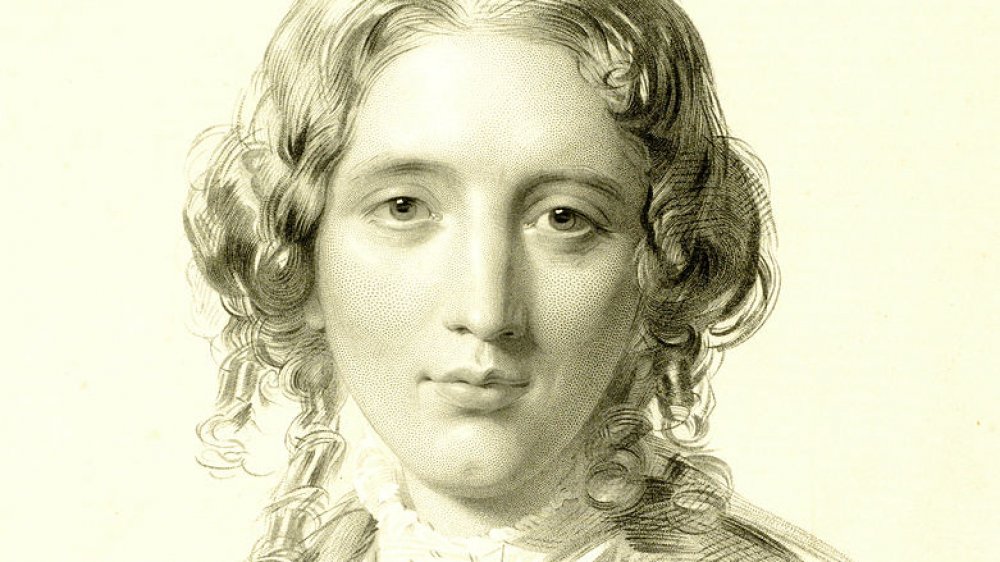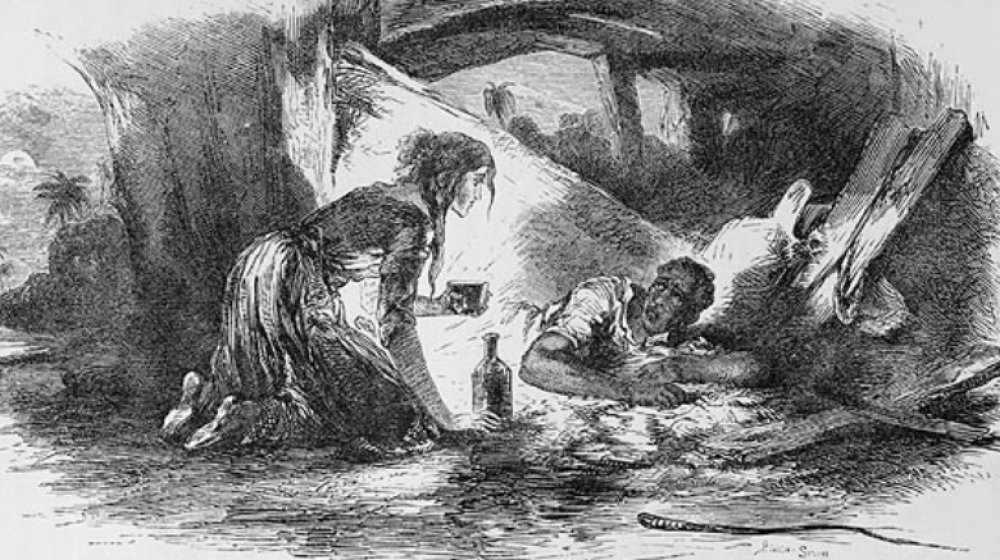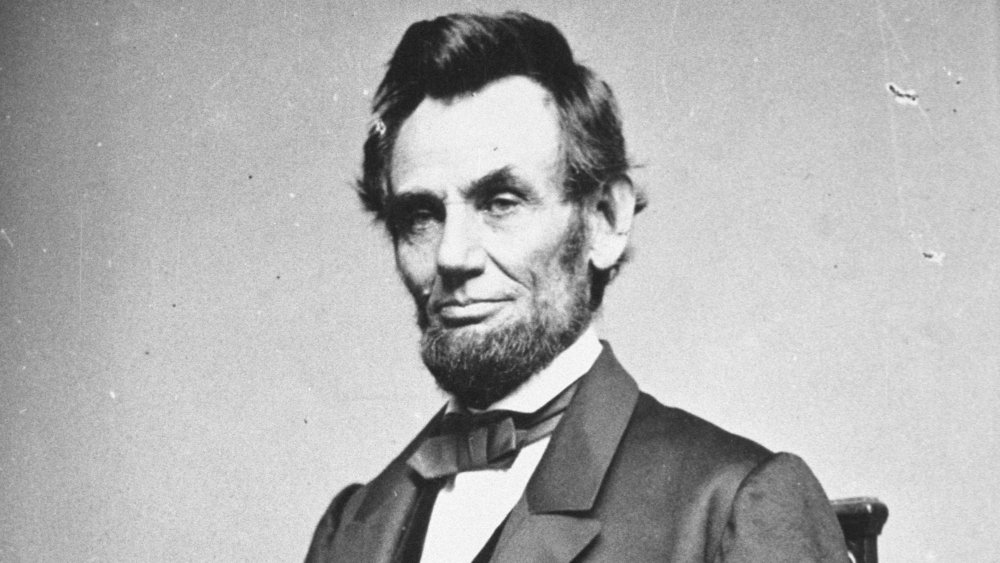The Untold Truth Of Uncle Tom's Cabin
"Let me tell you a story," says the preacher, says the politician, says the teacher. "People then," says the historian, "weren't so very different from who we are today. Let me give you some examples." Everybody loves a good story. (Some people even love bad stories. But we don't judge.) A story will help you pass the time, amuse you, teach you, and even change you.
If anyone knew this growing up, it was Harriet Beecher. Born in 1811, per Biography, one of nine children born to an influential minister and seminary president, Harriet was blessed with an education and her father's recognition of her considerable gifts: she was eight when he referred to her as "a great genius," as Annette Gordon-Reed writes in The New Yorker.
Her father was also a confirmed abolitionist, a fervent belief he passed on to his children, including Harriet. She married Calvin Stowe, and with her husband raised seven children, while also writing to supplement their income — one of the few mediums available to women, in those days. The loss of a child at the age of 18 months instilled in her the tragic grief that elicited empathy for enslaved mothers, whose children were taken from them and sold, never to be seen again.
Harriet Beecher Stowe was inspired to write
Southerners presented slavery as an institutional good, but especially after the passage of the Fugitive Slave Act of 1850, the narrative was shifting for anyone willing to hear the truth. Harriet Beecher Stowe made the nation sit up and listen.
Stowe often talked about how the story and characters that became Uncle Tom's Cabin came to her in a series of visions, the first of which happened while she took Communion in February 1851. She also freely admitted that another primary inspiration for the narrative came from the memoirs of one of those escaped slaves, Josiah Henson. Henson, who not only made it to freedom in Canada, but returned to the United States frequently to help other escaping slaves reach freedom — over 100 in all — became a Methodist minister and businessman in Canada. He helped establish a community there for former slaves, one of the last stops on the Underground Railroad, and after learning to read and write later in life, published his memoir, The Life of Josiah Henson, Formerly a Slave, Now an Inhabitant of Canada, as Narrated by Himself, in 1849, as NPR reports. Henson, says Smithsonian, became a prime inspiration for Harriet Beecher Stowe's most popular and important literary work.
Stowe's novel was a 19th century best-seller
In a later edition of his book, Henson spoke of meeting Stowe, relating his story to her. "She said she was glad it had been published, and hoped it would be of great service, and would open the eyes of the people to the enormity of the crime of holding men in bondage. She manifested so much interest in me, that I told her about the peculiarities of many slaveholders, and the slaves in the region where I had lived for forty-two years."
Driven by her faith, her upbringing, and inspired by stories like Henson's, Stowe asked herself a fundamental question, as preserved today in an 1852 letter: "This horror, this nightmare abomination! Can it be in my country?" It could, and so she put pen to paper. By June, the first installment of Uncle Tom's Cabin, or Life Among the Lowly appeared in an abolitionist newspaper, according to Biography, and it's estimated that as many as 50,000 people read the tale by way of the newspaper, whose circulation went up while it carried the installments. After the 41-part series concluded, the book was published in two volumes, and was immediately successful.
Lincoln called her "the little woman who made this great war"
Uncle Tom's Cabin was the best-selling novel of the 19th century, second only to the Bible. As Biography relates, the book sold 10,000 a week, and in its first year of publication, over 300,000 copies were sold — even while, remember, the book was banned in southern states. In early 1853, she published another book, The Key to Uncle Tom's Cabin: Presenting the Original Facts and Documents upon Which the Story Is Founded, Together with Corroborative Statements Verifying the Truth of the Work, which was essentially a bibliography of her sources, and an answer to her critics.
During the 1860 presidential election campaign, Lincoln's party bought and distributed another 100,000 copies as a way to gather abolitionist support for his run. It was Abraham Lincoln, now president of a nation fighting against itself in the Civil War, who met Stowe and allegedly told her, "Is this the little woman who made this great war?" It was also Lincoln who observed, very aptly, "He" (or, in this case, she) "who molds public sentiment is greater than he who makes statutes."
Stowe continued to write, though nothing had the impact of her novel exposing the horrors of American slavery. She died in 1896. Her grave bears the epitaph, "Her Children Rise up and Call Her Blessed."



